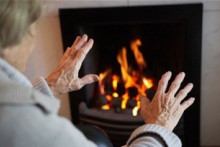Your doctoral research focused on gender inequalities in energy services. How does gender relate to energy policy?
Feenstra: ‘Energy policy is usually considered gender neutral, but it is in fact gender blind. It doesn’t reflect the diversity in society. The energy transition towards more sustainable energy sources is demand driven and it assumes that everyone has the same access to energy. However, one in seven households in the Netherlands cannot pay their energy bill on time. When you look at these households, you see there is a strong gender dimension. Women are overrepresented in this group. Research shows that in Europe energy poverty has a gender face, meaning that more women than men are struggling to afford the energy services which they need.’
Why are women more affected by energy poverty?
‘It is a combination of social, economic and biological factors. There are still very strong gender roles in society. Women are still the main caregivers and stay at home if a child or another member of the family needs care. That means they often work less, therefore make less money and end up living in cheaper, less sustainable houses with lower energy efficiency. In case of a divorce, women usually take custody of the children, yet they often have a lower income than the men. Women also live longer than men, and so there are more elderly women living on their own – often in a big old house. On top of that, women’s preferred ambient temperature is higher than men’s. Women’s bodies function differently, they need higher temperature in the room and that only increases as we grow older.’
We are discussing differences in access to energy. At the same time, every household in the Netherlands is connected to the energy system.
‘Absolutely, but access doesn’t meant that you can afford all the energy you need. Everyone has access to energy, but not necessarily to clean and sustainable energy sources. For example, there are a lot of subsidies but those assume you are able to invest – and then part of your investment is refunded. There is a trend to switch towards more environmentally friendly energy sources, such as electricity. That means the prices of electricity are lowered, while natural gas prices increase. If you live in a house with gas, you end up paying more because you either cannot invest in change or you are renting and your landlord is unwilling to invest, for instance. Some people might want to be part of the energy transition, but they simply can’t. There is inequality in that regard.
This was clear from my case study in Bulgaria, where many people use firewood for heating because it is the only affordable option for them. For many, it also means they can only heat up one room and they have to live in their kitchen the whole winter.’
The question behind your research was how to design an energy policy that reflects the rights and needs of all energy users. What should a gender just policy look like?
‘We need to look at who the end users are, what really happens behind the doors of different households. We should understand what the user needs before we draft new policy, because it should not contribute to the current inequality. For that, we first need more data, specifically gender segregated data. We also need to break down silos between policy interventions, we need to be multidisciplinary as policy makers. If we want sustainable growth, inclusion needs to be a crosscutting part of policy.’
Will your research findings be used in practice?
‘Yes, I presented them to the European Parliament as well as to the Dutch parliament. I’m also working on a decision-making game for policy makers in the energy sector and the government. The topic of gender just energy policy is becoming more visible, but it is one thing to talk about and another thing to actually do something. I hope to make the topic more tangible and find out exactly what we need in order to achieve more gender just policy. I will continue my research and I’ve also started my own foundation to make women more visible in the energy sector. If you can get the gender element in energy policy, you can get it into any policy.’







